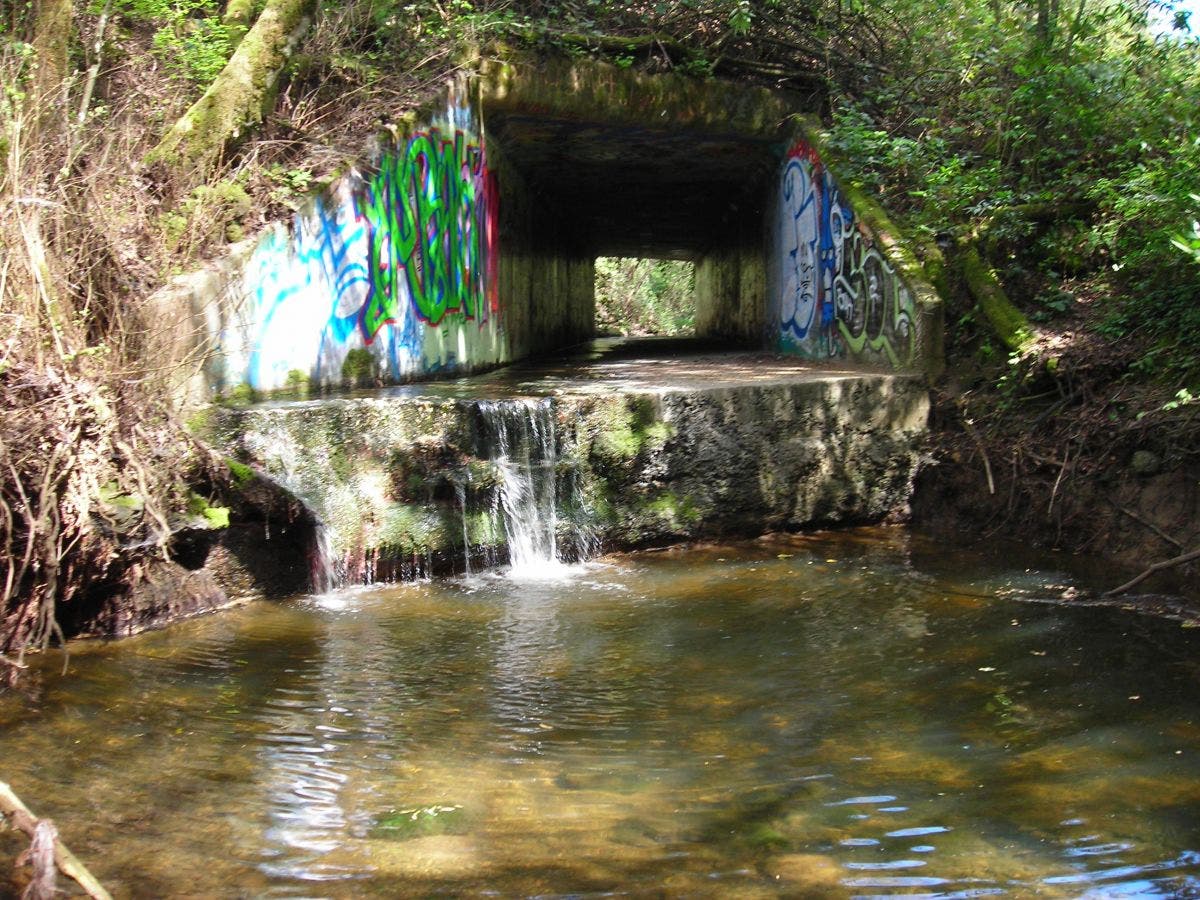FOR IMMEDIATE RELEASE
January 23, 2024
Contact:
Todd Steiner, Turtle Island Restoration Network, 415-488-7652, tsteiner@tirn.net
Ayano Hayes, Turtle Island Restoration Network, 415-663-8590, ahayes@tirn.net
San Geronimo Tributaries See Record Breaking Numbers of Spawning Salmon
As the spawning season for critically endangered Central Coast California Coho Salmon winds down, record numbers of coho have been documented in the tiny headwater streams of San Geronimo Watershed, a preferred habitat for this species.
Especially good news was recorded in Larsen Creek, which runs through a road culvert under Sir Francis Drake Boulevard, through the Lagunitas School grounds and up through the “back nine” of the former San Geronimo Golf Course.
“At least 4 coho redds (nests) have been documented so far this year in Larsen Creek, the second highest number recorded in nearly a quarter century, said Ayano Hayes, Watershed Biologist with Salmon Protection And Watershed Network (SPAWN).
Before this year only one coho nest (redd) was documented in Larsen Creek in the past 17 years. The only year more redds were recorded in Larsen Creek was in the 2004-05 spawning season, when 18 redds were recorded. Monitoring of Larsen Creek began in 2001, and a total of 35 redds were recorded in the first five years, before spawning dropped off to nearly nil.
SPAWN has worked to improve habitat for coho in Larsen Creek, removing an old building and a playground that spilled sand into the creek, and revegetating with native plants.
Hayes, has so far also documented high numbers of redds in Woodacre Creek with 20 so far, and 18 redds in Arroyo Creek. She also recorded a minimum of four redds in the monitored lower (0.1 mi) reach of Montezuma Creek, the most nests seen since the first redd was documented in 2002-03 by SPAWN. Most of these creeks run through the backyards of many San Geronimo residents.
“In my four years of monitoring the upper tributaries, I’ve never seen so many live fish in one survey day! On Arroyo creek we witnessed 19 coho salmon actively spawning and 28 coho salmon in Woodacre creek.”
Another observation Ayano made while surveying, “This year, salmon built their nests in habitat that have not been utilized for years. Riffles zones that I have always thought would be great spawning sites were finally used. It’s great to see the upper tributaries providing suitable habitat for optimal nest digging while decreasing the competition elsewhere in the system.”
The Point Reyes National Seashore has also released preliminary data suggesting that this might be a banner year for spawning in Olema Creek too, another tributary to Lagunitas Creek.
Coho salmon have evolved over eons to prefer tiny headwater tributaries to spawn, presumably because their eggs and offspring have the greatest chance of survival.
Yet for Marin’s coho salmon, culverts create serious issues for coho migration. Limiting access to these streams which are blocked partially or fully due to channelization of creeks through these narrow road culverts running under streets. During winter storms when coho are migrating, most road culverts increase stream velocity, often creating flows too strong for coho to maneuver through.
“They create conditions similar to holding your thumb over a lawn hose nozzle, which forces the water to spray out much harder. This increased velocity can make it impossible for coho to negotiate these artificially high flows,” said Hayes.
This is a problem for coho in most of the tributaries of the San Geronimo Watershed, with the exceptions being in Woodacre and Arroyo Creeks, where culverts have been improved or replaced with coho friendly repairs in past years, and where spawning numbers remain the highest.
The high velocity at the downstream end of culverts also erode the stream bed often leaving the culvert entrance perched high above the stream making access greatly restricted or completely impassable, during the very time when coho are looking for spawning grounds.
“Culverts restrict the coho’s access to preferred habitat and thus only under perfect conditions do coho make into their preferred habitat in these small habitats,” said Hayes.
“Thankfully, this year timing and magnitude of storm conditions lined up just right for coho, allowing for more fish to make it into more tributaries,” she said.
While a few road culverts in the San Geronimo Watershed have been replaced or modified to make them more fish-friendly, most culverts still create obstacles to migration.
The Salmon Protection And Watershed Network (SPAWN), who monitor the smaller tributaries of San Geronimo Creek, and recently removed the Roy’s Dam on the former San Geronimo Golf Course is encouraging more action to fix road crossings and improve access for the endangered salmon.
Ayano notes, “With more rain predicted, and the steelhead season upon us, more surveying will be done throughout the next month. However, at this point in time we are just under the collective coho redd total documented for the strongest cohort back in 2021-22 in the San Geronimo Tributaries- 46 redds to 51 redds.” As the coho cohort that wavers between the strongest and the weakest class, this is incredible news for this cohort’s recovery.
This is also follows the strongest year ever recorded for spring out-migration of juvenile (smolts) returning to the Ocean in 2023.
Todd Steiner, ecologist and founder of SPAWN commented, “The right environmental conditions have aligned for coho, especially over the past year. This coupled with the habitat restoration and improvements completed by the Park Service, the Water District, SPAWN and others are hopeful signs that all the hard work and investments by funding agencies over the years is starting to see dividends that are giving the coho a fighting chance at recovery.”
###
ABOUT TURTLE ISLAND RESTORATION NETWORK
The Salmon Protection and Watershed Network protects endangered, wild Coho salmon and the forests and watersheds they need to survive in West Marin, and is a program of Turtle Island Restoration Network, a leading advocate for the world’s oceans and marine wildlife. For more information on the Salmon Protection and Watershed Network and Turtle Island Restoration Network, visit www.seaturtles.org.




